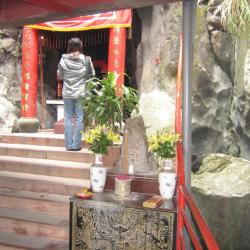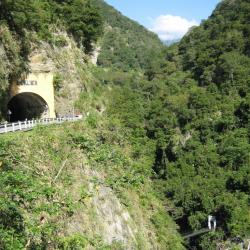The Monument of the deceased Inspector in Charge Daigoro of Karenko (now Hualien County), is located at the foot of the Zhuilu section of the Hehuan Traversing Historic Trail, about 50 meters away from the Duan-ya Police Post.
The monument was set up in memory of Inspector in Charge Daigoro of Donglu Checkpoint (later the checkpoint became Duan’ya police post), who was attacked and killed by indigenous people in 1916 while on duty. The monument was originally erected on a wooden pillar but was later converted into a cement tombstone in 1935. As the condition of the road that leads to the police post and the monument is poor, the monument is not open now.

